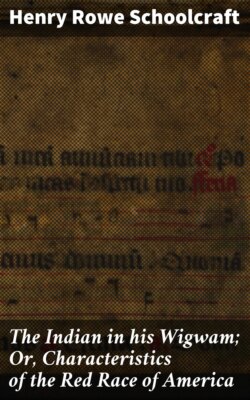Читать книгу The Indian in his Wigwam; Or, Characteristics of the Red Race of America - Henry Rowe Schoolcraft - Страница 11
На сайте Литреса книга снята с продажи.
THE MANITO TREE.
ОглавлениеTable of Contents
There is a prominent hill in the vicinity of Sault Ste. Marie, at the outlet of lake Superior, called by the French La Butte des Terres. An Indian footpath formerly connected this hill with the old French settlement at those falls, from which it is distant about a mile. In the intermediate space, near the path, there formerly stood a tree, a large mountain ash, from which, Indian tradition says, there issued a sound, resembling that produced by their own war-drums, during one of the most calm and cloudless days. This occurred long before the French appeared in the country. It was consequently regarded as the local residence of a spirit, and deemed sacred.
From that time they began to deposit at its foot, an offering of small green twigs and boughs, whenever they passed the path, so that, in process of time, a high pile of these offerings of the forest was accumulated. It seemed as if, by this procedure, the other trees had each made an offering to this tree. At length the tree blew down, during a violent storm, and has since entirely decayed, but the spot was recollected and the offerings kept up, and they would have been continued to the present hour, had not an accidental circumstance put a stop to it.
In the month of July 1822, the government sent a military force to take post, at that ancient point of French settlement, at the foot of the falls, and one of the first acts of the commanding officer was to order out a fatigue party to cut a wagon road from the selected site of the post to the hill. This road was directed to be cut sixty feet wide, and it passed over the site of the tree. The pile of offerings was thus removed, without the men's knowing that it ever had had a superstitious origin; and thus the practice itself came to an end. I had landed with the troops, and been at the place but nine days, in the exercise of my appropriate duties as an Agent on the part of the government to the tribe, when this trait of character was mentioned to me, and I was thus made personally acquainted with the locality, the cutting of the road, and the final extinction of the rite.
Our Indians are rather prone to regard the coming of the white man, as fulfilling certain obscure prophecies of their own priests; and that they are, at best, harbingers of evil to them; and with their usual belief in fatality, they tacitly drop such rites as the foregoing. They can excuse themselves to their consciences in such cases, in relinquishing the worship of a local manito, by saying: it is the tread of the white man that has desecrated the ground.
